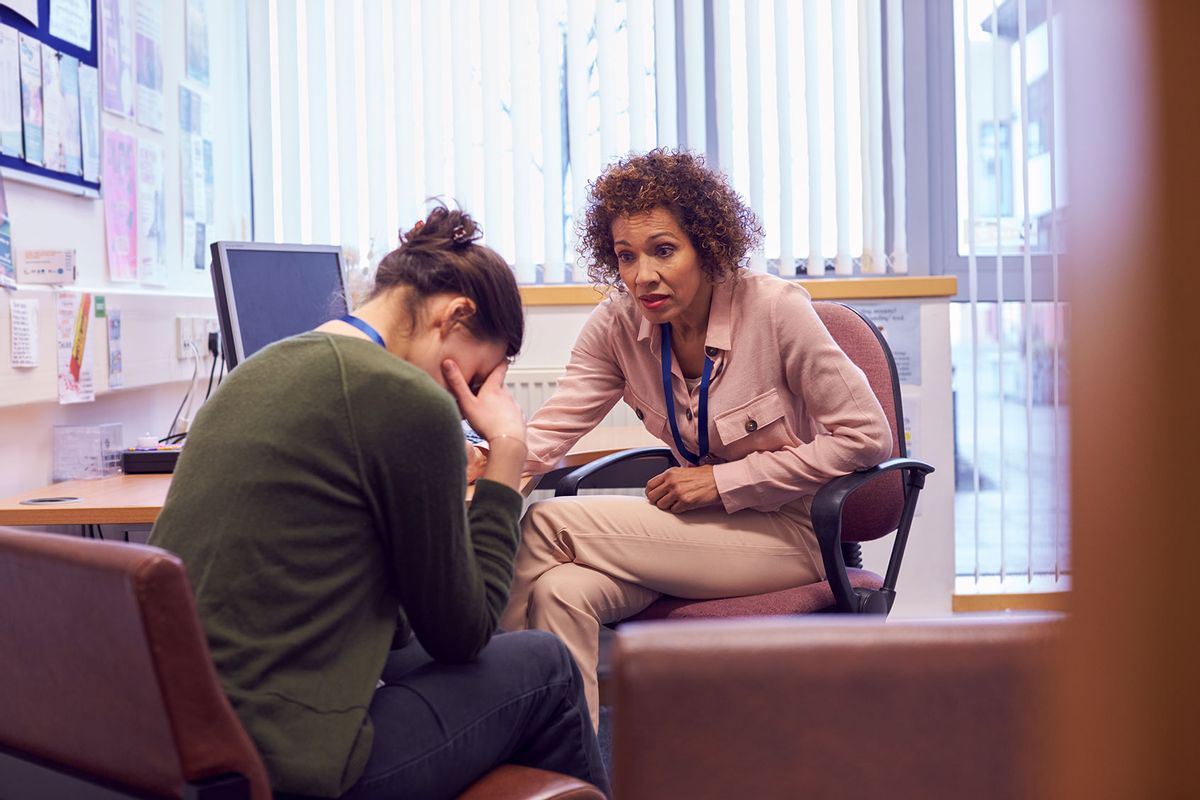Last fall, more than 130 children's organizations called on President Biden to declare a national emergency in response to America's youth mental health crisis. That news came just days after an expert panel recommended that all children ages eight to 18 receive routine screenings for anxiety.
These developments drew new attention to a worsening situation. Yet too often, concrete strategies for improving youth mental health are missing from the discussion.
One of those strategies should be expanded access to school counseling.
School counselors are trained to help K-12 students reach their goals by addressing academic, career development, emotional, and social challenges. These professionals have a skillset that goes beyond assisting students with navigating classroom conflicts and college readiness. They also have the training to recognize mental health warning signs.
Because they interact with children and teens every day, school counselors can be a critical line of defense against worsening mental health conditions. And yet they remain all too uncommon, particularly in schools that serve poor and marginalized communities. We need more school counselors.
There's no denying that COVID-19 has taken a tragic toll on young people's well-being. Between 2016 and 2021, mental-health-related hospital admissions for people under 20 jumped by 61%, according to a recent analysis by the Clarify Health Institute. Mental health emergency room visits among kids aged 5-11 increased by 24% in 2020, compared to the previous year.
But this decline in mental health began before the pandemic. Over one-third of high school students reported feelings of "sadness" or "hopelessness" in 2019, according to the Centers for Disease Control. A JAMA Pediatrics study published that same year found that nearly 8 million children between 6 and 18 reported at least one mental health condition.
Whereas the American School Counselor Association recommends one counselor for every 250 students, the average ratio nationwide is about one to 400.
The many causes of youth depression and anxiety include cyberbullying, traumatic experiences, marginalization, and school shootings. However, school shootings have far-reaching effects, and can also traumatize those who did not personally experience the violent acts. A majority of all American teens now worry that a shooting could occur at their own school, according to the Pew Research Center.
School counselors could help arrest these heartbreaking trends. But roughly a fifth of all students in grades K-12 have no access to counseling in their school. In those that do have counselors, they're often spread too thin. Even the most devoted counselors are limited in the good they can do by the unmanageable number of students in their charge.
Whereas the American School Counselor Association recommends one counselor for every 250 students, the average ratio nationwide is about one to 400 — and in some states, it's one to more than 600. At least 20 states don't even have school counselor mandates on the books, leaving millions of kids in the lurch. Black and low-income students are more likely than their peers to lack sufficient access.
But even these figures understate the severity of the counselor shortage. That's because the kinds of guidance that school counselors provide can vary dramatically. Within high schools, specifically, the counselor's role is often confined to academics and college planning -- with little focus on students' emotional and social well-being.
That disconnect has become particularly problematic amid the pandemic. In a recent New York Times survey of over 360 counselors nationwide, one proclaimed that "providing students with adequate mental health services needs to be just as important as any other aspect of school."
Want more parenting and education stories in your inbox? Subscribe to Salon's weekly newsletter The Vulgar Scientist.
Unfortunately, these concerns have received little attention and few corrective measures, even in the wake of COVID-19. Just four in 10 schools have hired new staff to focus on students' mental health since the beginning of the pandemic, a recent survey by the Kaiser Family Foundation found.
If we're to have any hope of reversing the alarming youth mental-health deterioration, we must improve access to school counselors. The federal government has provided several rounds of emergency relief funds to schools since the start of the pandemic, some of which have gone to mental health. In October, the Biden Administration released an additional $280 million for this purpose.
These funds are a welcome start, but we need additional action. Nationwide, all schools should be required to provide counseling services to their students and maintain appropriate counselor-to-student ratios. And at the state level, curriculum designers should incorporate social and emotional learning as standard practice for K-12 students.
The youth mental-health crisis is all around us — in the rate of teen suicide, in images of school shootings, and in epidemics of depression, anxiety, and loneliness. Expanding access to school counselors could make these tragedies far less common, while giving students the support, guidance, and care they need to flourish.



Shares